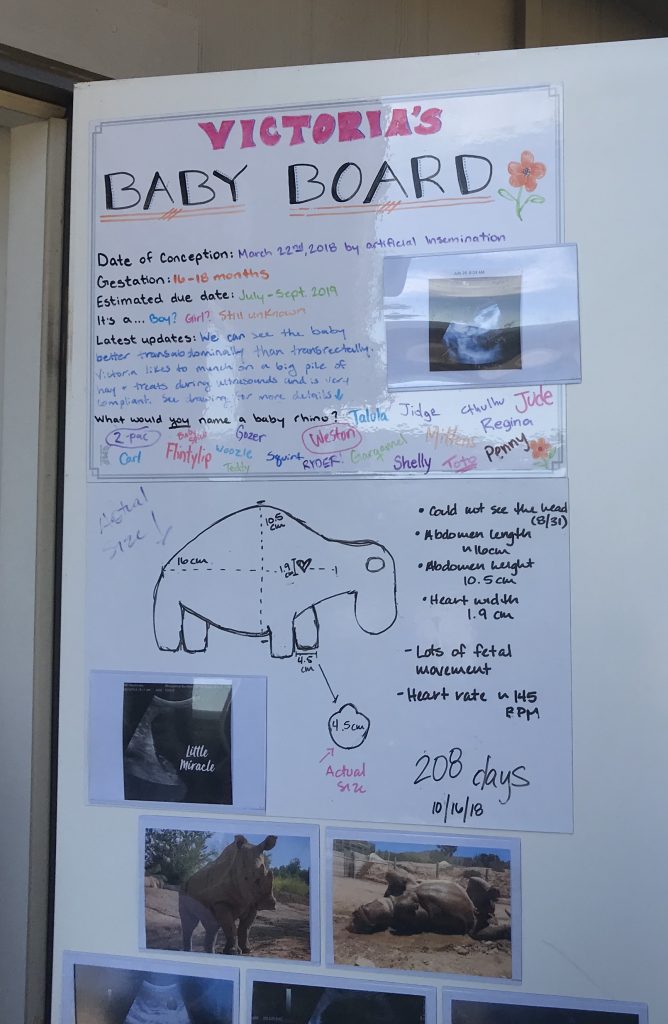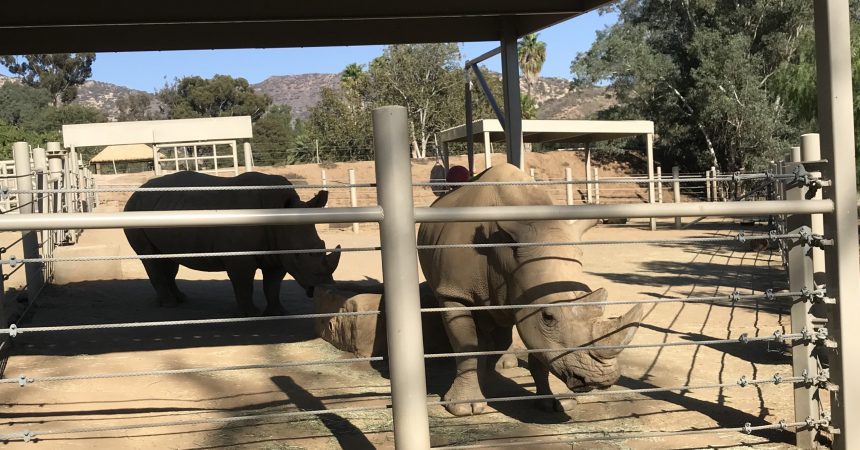Zoo InternQuest is a seven-week career exploration program for San Diego County high school juniors and seniors. Students have the unique opportunity to meet professionals working for the San Diego Zoo, Safari Park, and Institute for Conservation Research, learn about their jobs, and then blog about their experience online. Follow their adventures here on the Zoo’s website!
 If you’ve been to the San Diego Zoo Safari Park in the past few years, you might have spotted some of their most important residents, the southern white rhino. With the help of keepers and scientists at the Safari Park and Institute for Conservation Research, southern white rhinos are making strides for their own species as well as the northern white rhino. More specifically, with help from Ms. Jonnie Capiro, a Lead Keeper at the Safari Park, the six females and one male southern white rhinos have been ambassadors for wild southern white rhinos since their arrival to the Safari Park in November 2015.
If you’ve been to the San Diego Zoo Safari Park in the past few years, you might have spotted some of their most important residents, the southern white rhino. With the help of keepers and scientists at the Safari Park and Institute for Conservation Research, southern white rhinos are making strides for their own species as well as the northern white rhino. More specifically, with help from Ms. Jonnie Capiro, a Lead Keeper at the Safari Park, the six females and one male southern white rhinos have been ambassadors for wild southern white rhinos since their arrival to the Safari Park in November 2015.
Currently, two females, Victoria and Amani, are pregnant. They were both successfully artificially inseminated. Artificial insemination is the process of assisted conception by inserting sperm into the female without the use of natural breeding. Since a rhino’s gestation is 16 to 18 months, Victoria and Amani aren’t due to give birth anytime soon. Victoria is around seven months along in her pregnancy, while Amani is only about three months pregnant. These pregnancies are part of a larger project to help save the northern white rhino. In the future, the ultimate goal is to use southern white rhinos as surrogates for northern white rhino embryos. This process would involve in vitro fertilization, which is when a northern white rhino egg is fertilized with sperm in a lab setting, and then the fertilized egg is inserted into a southern white rhino. This project has been ongoing since their arrival to the Safari Park.
When the southern white rhinos came from different preserves in Africa, very little was known about them. To learn more about their reproductive physiology, Ms. Capiro and her coworkers tracked each female’s ovulation cycle. By tracking each cycle, Ms Capiro and her team had a better idea of when the artificial insemination would be most successful. Given that this project is still relatively young and not too much is known about artificial insemination and in vitro fertilization in rhinos, new technologies are being developed. When brainstorming how technologies could be developed, well-researched human reproductive technologies were consulted.
Ms. Capiro is the primary trainer for Amani, the second female to get pregnant. Amani is the oldest female at the Rhino Rescue Center, estimated to be around 10 years old. Her fourth artificial insemination resulted in a successful pregnancy. Amani has been trained to allow veterinarians and researchers to conduct ultrasounds, both transrectal and transabdominal, for examination of the baby. In the first stages of pregnancy, ultrasounds are given rectally because it is the easiest way to see the baby. However, as the baby grows and moves down the uterus, it will be easier to see through her abdomen. For all ultrasounds, Amani is trained to hold still for the safety of the keeper and researcher. Ms. Capiro was able to train Amani to do this through positive reinforcement like treats. Positive reinforcement increases the likelihood of a behavior happening again by giving the animal something they like in exchange for the wanted behavior.
Meeting with Ms. Capiro and watching her interact with Amani was a special experience because of the unique bond between them. This bond is integral for Amani’s health and the success of the research being conducted at the Rhino Rescue Center. For Amani to become pregnant she needed to be comfortable with Ms. Capiro and the environment at the Safari Park. Through extensive research and training, Ms. Capiro and Amani are furthering advancements in rhino conservation.
McKinna, Real World Team
Week Four, Fall Session 2018


